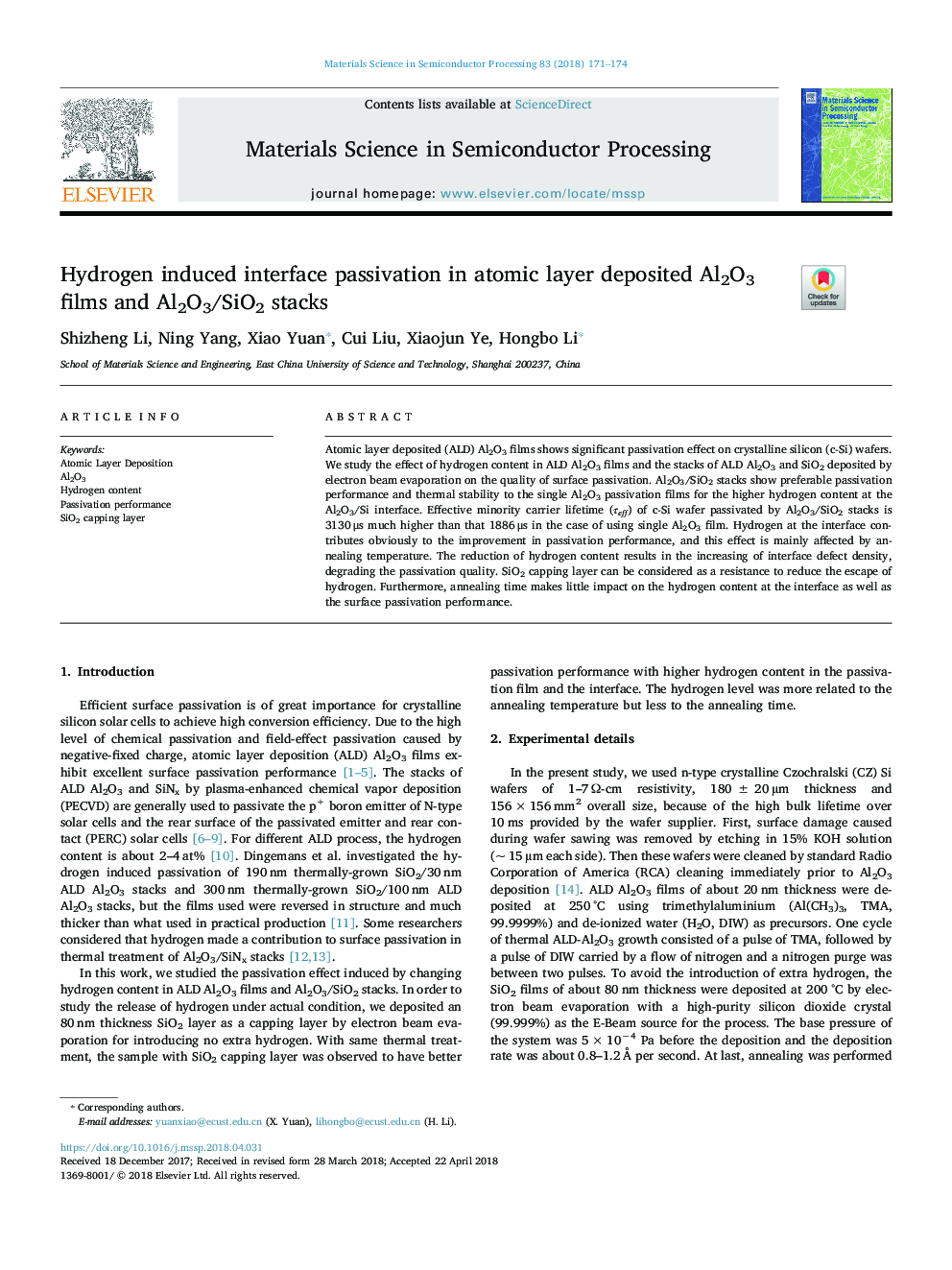| Article ID | Journal | Published Year | Pages | File Type |
|---|---|---|---|---|
| 7117621 | Materials Science in Semiconductor Processing | 2018 | 4 Pages |
Abstract
Atomic layer deposited (ALD) Al2O3 films shows significant passivation effect on crystalline silicon (c-Si) wafers. We study the effect of hydrogen content in ALD Al2O3 films and the stacks of ALD Al2O3 and SiO2 deposited by electron beam evaporation on the quality of surface passivation. Al2O3/SiO2 stacks show preferable passivation performance and thermal stability to the single Al2O3 passivation films for the higher hydrogen content at the Al2O3/Si interface. Effective minority carrier lifetime (Ïeff) of c-Si wafer passivated by Al2O3/SiO2 stacks is 3130â¯Î¼s much higher than that 1886â¯Î¼s in the case of using single Al2O3 film. Hydrogen at the interface contributes obviously to the improvement in passivation performance, and this effect is mainly affected by annealing temperature. The reduction of hydrogen content results in the increasing of interface defect density, degrading the passivation quality. SiO2 capping layer can be considered as a resistance to reduce the escape of hydrogen. Furthermore, annealing time makes little impact on the hydrogen content at the interface as well as the surface passivation performance.
Related Topics
Physical Sciences and Engineering
Engineering
Electrical and Electronic Engineering
Authors
Shizheng Li, Ning Yang, Xiao Yuan, Cui Liu, Xiaojun Ye, Hongbo Li,
